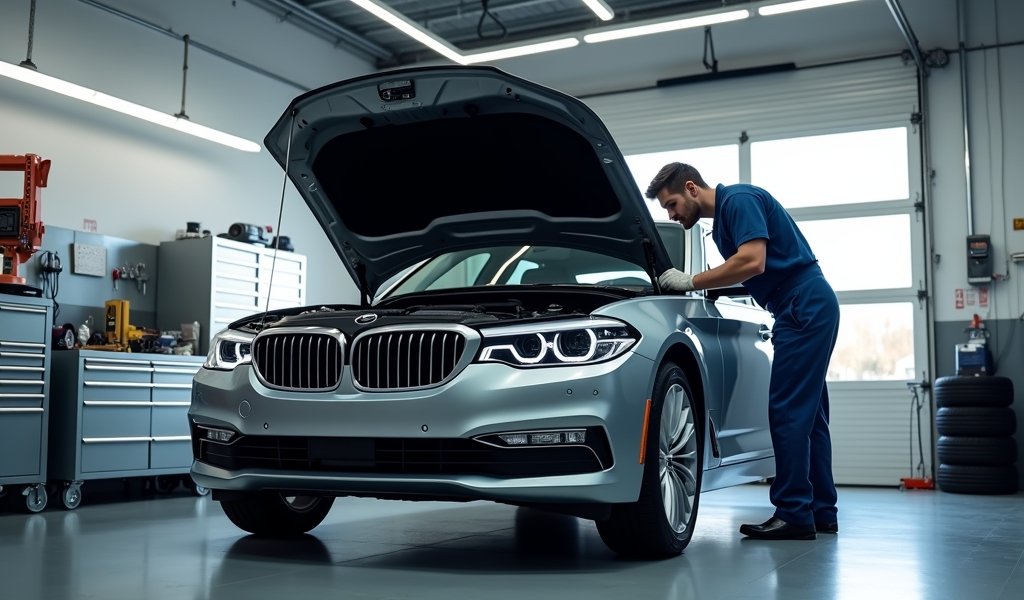Overview
This article outlines seven practical strategies to save money on car repairs, including performing regular maintenance, handling simple DIY repairs, finding trustworthy mechanics, choosing appropriate parts, addressing issues early, utilizing warranty coverage, and leveraging membership benefits. By implementing these approaches, drivers can reduce annual maintenance costs by 30-50% while maintaining vehicle reliability and safety.
Table of Contents
- Regular Maintenance: The Cost-Effective Way to Prevent Major Repairs
- DIY Repairs: Simple Jobs You Can Handle Yourself
- Finding the Right Mechanic: Quality Service Without Breaking the Bank
- Parts Shopping: OEM vs. Aftermarket Options
- Preventative Care: Addressing Small Issues Before They Become Expensive
- Warranty Coverage: Making the Most of What You Already Have
- Membership Benefits: How Auto Clubs Can Save You Money
- Conclusion: Balancing Quality Care with Cost Savings
- Frequently Asked Questions
Let’s face it – car repairs can be a serious drain on your wallet. As someone who’s spent over 20 years under the hood, I’ve seen countless drivers shocked by repair bills that could have been significantly reduced with a little knowledge and planning. The average American spends roughly $1,200 annually on vehicle maintenance and repairs, according to AAA’s research, but I’m here to tell you that number can be substantially lower.
Whether you’re driving a brand-new vehicle or keeping an older model running, these seven proven strategies will help you keep more money in your pocket without compromising your vehicle’s reliability or safety. These aren’t just quick fixes – they’re sustainable approaches to vehicle maintenance that pay dividends over time.
Regular Maintenance: The Cost-Effective Way to Prevent Major Repairs
I can’t stress this enough: routine maintenance is your best defense against expensive repairs. Think of it as preventative medicine for your vehicle. That $50 oil change might seem like an expense you can postpone, but skipping it can lead to engine problems costing thousands to fix.
Your owner’s manual (that booklet gathering dust in your glove compartment) contains a maintenance schedule specifically designed for your vehicle. This isn’t a wishlist from the manufacturer – it’s a critical roadmap to keeping repair costs down. Following it religiously can extend your vehicle’s life by years.
Key maintenance items to prioritize include:
- Regular oil changes (typically every 5,000-7,500 miles for conventional oil)
- Air filter replacements (usually every 15,000-30,000 miles)
- Fluid checks and top-offs (transmission, brake, power steering, coolant)
- Tire rotations and pressure checks (approximately every 6,000-8,000 miles)
- Brake inspections (at least annually)
Many drivers skip scheduled maintenance thinking they’re saving money, but this approach typically costs much more in the long run. For example, replacing a timing belt at the recommended interval costs around $500-900 depending on your vehicle, but waiting until it breaks can result in catastrophic engine damage exceeding $2,000-4,000 in repairs.
Consider creating a simple maintenance log to track when services are due. Even setting calendar reminders on your phone for upcoming maintenance can prevent costly oversights. The most affordable places for oil changes often offer free inspections that can catch issues before they become serious problems.
DIY Repairs: Simple Jobs You Can Handle Yourself

You don’t need to be a certified technician to handle basic maintenance tasks. Learning to perform simple repairs yourself can save hundreds of dollars annually. With today’s vehicles, many routine maintenance items are designed to be user-friendly.
Some beginner-friendly maintenance tasks include:
- Replacing wiper blades ($10-20 DIY vs. $40-50 at a shop)
- Changing air filters ($15-30 DIY vs. $40-70 professional service)
- Replacing headlight bulbs ($15-25 DIY vs. $50-100 at a shop)
- Battery replacement ($100-150 DIY vs. $200-300 professional installation)
- Spark plug replacement for some engines ($40-100 DIY vs. $150-250 professional service)
Modern vehicles often require fewer tools than older models. For most basic jobs, a simple socket set, screwdrivers, pliers, and a jack with stands will cover your needs. This $100-150 investment in tools can pay for itself after just a few DIY repairs.
Learning resources abound for the DIY-curious. YouTube channels like ChrisFix and Scotty Kilmer offer detailed guides for beginners. Vehicle-specific forums provide model-specific advice, and auto parts stores often have free how-to guides. You can also explore common DIY car repairs that save money to get started.
Start small – replacing your own cabin air filter might take 10 minutes and save you $50. As your confidence grows, so will your skills and savings. Just know your limits; complex repairs involving major systems like transmission or engine internals are best left to professionals unless you have considerable experience.
Finding the Right Mechanic: Quality Service Without Breaking the Bank
When repairs exceed your DIY comfort zone, finding a trustworthy, fairly-priced mechanic becomes essential. The difference between shops can be substantial – I’ve seen identical repairs quoted with price variations of 50% or more.
Start by asking for recommendations from family and friends who drive similar vehicles. Online reviews can help, but personal referrals typically provide more reliable insights. Look for mechanics who specialize in your vehicle’s make – a shop that primarily services Honda and Toyota might not be the best choice for your European luxury car.
Consider these options beyond dealership service departments:
- Independent repair shops (typically 20-40% less expensive than dealerships)
- ASE-certified technicians (look for the blue seal of excellence)
- Specialty shops focused on your vehicle’s make
- Local community colleges with automotive programs (often offer discounted service)
Don’t be afraid to get multiple estimates for major repairs. Most reputable shops will provide free quotes, and having alternatives gives you negotiating leverage. When comparing quotes, ensure they include the same quality of parts and similar warranties.
Develop a relationship with your chosen shop. A mechanic who knows your vehicle’s history can provide more targeted maintenance recommendations and might offer loyal customers flexibility with payment options or courtesy services. Finding affordable auto service doesn’t mean compromising on quality – it means finding professionals who provide fair value.
Parts Shopping: OEM vs. Aftermarket Options
Understanding your options when it comes to replacement parts can lead to significant savings. Original Equipment Manufacturer (OEM) parts come directly from your vehicle’s manufacturer and carry a premium price. Aftermarket parts, made by third-party manufacturers, typically cost 20-50% less.
Despite what dealerships might suggest, aftermarket parts aren’t necessarily inferior. Many are produced by the same companies that make OEM parts but without the manufacturer’s branding. Some aftermarket parts even improve upon the original design, especially for vehicles with known weak points.
Here’s a general guideline for choosing between OEM and aftermarket:
- Consider OEM for critical safety systems (airbags, brake components on newer vehicles)
- Aftermarket parts work well for wear items (filters, brake pads, rotors, belts, hoses)
- Rebuilt or remanufactured parts offer good value for complex components (alternators, starters, A/C compressors)
- Used parts from salvage yards can save money on body panels and certain mechanical components
When purchasing aftermarket parts, stick with reputable brands like Bosch, Denso, ACDelco, or NAPA. Quality aftermarket parts typically come with warranties comparable to (or sometimes better than) OEM parts. Many online retailers like RockAuto and Amazon offer significant discounts compared to local auto parts stores, though you’ll need to factor in shipping time.
For complex electronic components like sensors or modules, OEM parts sometimes provide more reliability, but the price difference can be substantial. In these cases, research model-specific forums to see what other owners recommend for your particular vehicle.
Preventative Care: Addressing Small Issues Before They Become Expensive
Some of the most expensive repairs start as minor issues that escalate when ignored. Training yourself to recognize warning signs can prevent small problems from becoming budget-busters. Your vehicle communicates problems through sounds, smells, fluid leaks, and dashboard indicators – learning this language pays dividends.
Common warning signs worth immediate attention include:
- Squealing or grinding brakes (addressing early costs $150-300 vs. $500+ if rotors get damaged)
- Fluid leaks (fixing a small oil leak might cost $150-300 vs. $2,000+ for a seized engine)
- Check engine light (a $100 diagnostic could prevent $1,000+ in damage)
- Vibrations or pulling while driving (often indicates alignment or tire issues that can lead to premature tire wear)
- Unusual noises (knocking, clicking, whining) that develop suddenly
When symptoms appear, avoid the temptation to turn up the radio and hope they resolve themselves. This rarely ends well. Instead, get a professional diagnosis quickly. Many auto parts stores offer free check engine light scanning, which can provide valuable initial information.
Seasonal checks are another preventative measure worth implementing. Before winter, have your battery and charging system tested (often free at parts stores) and check your cooling system. Before summer road trips, verify your A/C is working properly and inspect belts and hoses. These preemptive checks can prevent breakdowns in challenging conditions.
Warranty Coverage: Making the Most of What You Already Have

You’d be surprised how many drivers pay for repairs that should be covered under warranty. Every year, millions of dollars are spent on repairs that manufacturers would have covered – if only the vehicle owner had asked.
New vehicles typically come with comprehensive coverage that includes:
- Bumper-to-bumper warranty (usually 3 years/36,000 miles)
- Powertrain warranty (typically 5 years/60,000 miles, sometimes longer)
- Emissions components coverage (often 8 years/80,000 miles)
- Corrosion coverage (5-10 years, sometimes unlimited miles)
- Roadside assistance (duration varies by manufacturer)
Beyond these standard warranties, check for recalls and technical service bulletins (TSBs). Recalls address safety issues and are repaired at no cost regardless of your vehicle’s age. TSBs document known problems and sometimes lead to “goodwill” repairs where manufacturers cover some or all costs even outside warranty periods.
For used vehicles, certified pre-owned programs often include extended warranty coverage. Aftermarket warranties can provide peace of mind, though read the fine print carefully – many have significant exclusions or high deductibles that reduce their value.
To leverage warranty coverage effectively:
- Keep detailed service records (critical for warranty claims)
- Report problems promptly while still under coverage
- Be persistent if warranty claims are initially denied
- Research recalls regularly using your VIN at NHTSA’s recall database
Even outside warranty periods, don’t hesitate to contact the manufacturer about premature failures of major components. Many offer “goodwill” assistance for loyal customers, especially for known problem areas.
Membership Benefits: How Auto Clubs Can Save You Money
Membership organizations like AAA, AARP, and warehouse clubs offer significant discounts on automotive services that many members overlook. These savings can quickly exceed the annual membership fee, essentially paying you to join.
Common automotive benefits include:
- Discounted repair services (10-20% at participating shops)
- Free towing (avoiding $100+ out-of-pocket expenses)
- Battery replacement services (often at lower rates than auto parts stores)
- Tire discounts through preferred partners
- Free vehicle inspections (catching problems before they escalate)
Warehouse clubs like Costco and Sam’s Club offer competitive pricing on tires with free rotation and balance services that can save $50-100 annually. Their automotive centers typically provide quality service at below-market rates.
Credit card rewards programs sometimes include bonus points for automotive expenses. Rotating category cards may offer 5% cashback on gas and auto repairs during certain quarters. These savings add up substantially over time.
Many auto insurance policies include roadside assistance that duplicates AAA benefits. Check your coverage before paying for redundant services. Some insurers also offer diminishing deductible programs or accident forgiveness that can reduce long-term costs.
For military members, veterans, and their families, organizations like USAA provide specialized automotive services and insurance options with significant cost advantages. Several major repair chains and parts stores offer military discounts as well.
Conclusion: Balancing Quality Care with Cost Savings
Saving money on car repairs isn’t about cutting corners – it’s about being strategic and proactive. The most successful approach combines preventative maintenance, knowing which tasks you can handle yourself, finding trustworthy professionals for complex repairs, and leveraging warranties and memberships to their full potential.
Remember that the cheapest option isn’t always the most economical in the long run. Using substandard parts or deferring necessary maintenance might save money today but cost substantially more down the road. The goal is finding the sweet spot where quality and value intersect.
Start by implementing the strategies that require the least effort – following your maintenance schedule, investigating warranty coverage, and joining relevant membership programs. As you become more comfortable, gradually tackle simple DIY tasks and develop relationships with quality independent repair shops.
With these approaches, you can reasonably expect to reduce your annual repair and maintenance costs by 30-50% while maintaining or even improving your vehicle’s reliability. That’s money that can go toward your next vehicle, other financial goals, or simply reducing financial stress.
Your vehicle is likely one of your most valuable assets – treating it with informed care not only saves money but provides the peace of mind that comes from driving a well-maintained machine. Safe travels and happy saving!
Frequently Asked Questions
How often should I really change my oil?
Modern vehicles with synthetic oil can go 7,500-10,000 miles between changes, though severe driving conditions may require more frequent changes. Always follow your owner’s manual guidelines rather than the old 3,000-mile rule.
Are extended warranties worth the cost?
Factory-backed extended warranties can be valuable for vehicles with complex electronics or known reliability issues, particularly if you plan to keep the vehicle beyond the standard warranty period. Third-party warranties often have significant exclusions and high deductibles that reduce their value.
Is it worth fixing an older car or should I just replace it?
If repair costs exceed 50% of your vehicle’s value within a 12-month period, replacement is typically more economical. Consider the vehicle’s reliability history and whether upcoming maintenance will likely require additional major expenses.
Can I trust mobile mechanics who come to my home?
Reputable mobile mechanics with strong reviews and proper certification can provide quality service at competitive prices with the convenience of not having to leave home. Verify their certification, insurance, and warranty policies before hiring.
How important is using the exact oil viscosity recommended for my car?
Using the manufacturer-recommended oil viscosity is crucial for proper engine protection and fuel economy. Modern engines are designed with specific tolerances that require particular oil weights, and using incorrect viscosity can accelerate wear and potentially void warranties.


Pingback: Transfer Case Chain Replacement: 7 Steps - knowsyourcar.com
Pingback: Parking Brake Cable Adjustment Made Easy - knowsyourcar.com